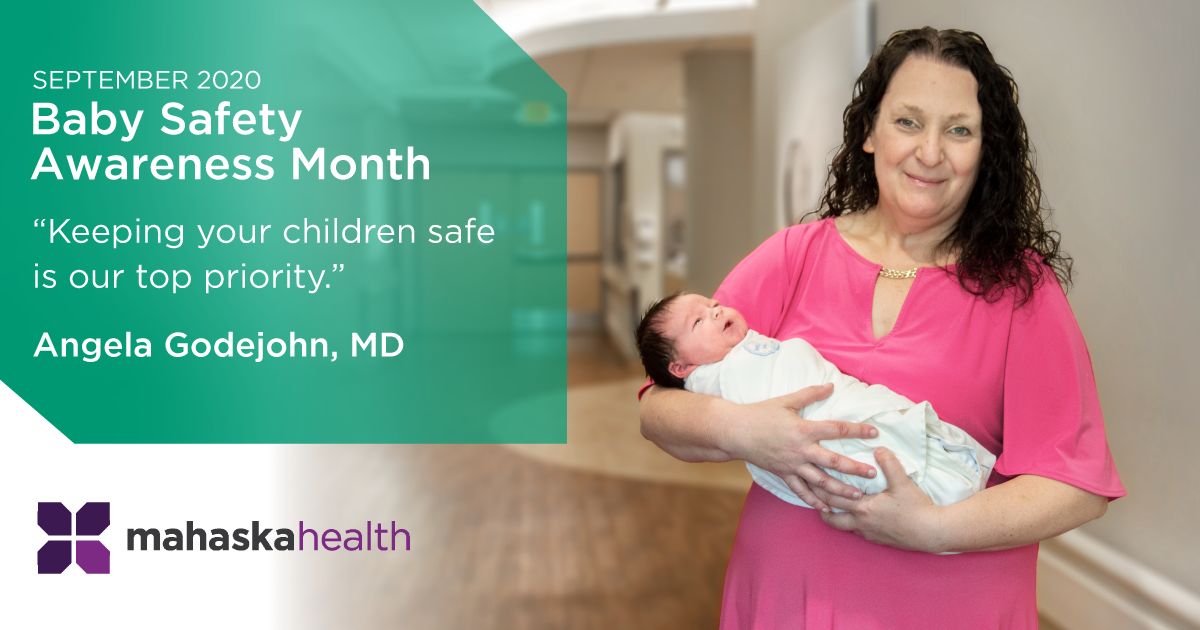
As parents, creating a safe environment for our children is always a top priority. Newborn safety is particularly important. There is an abundance of information on how to keep your baby safe, so it is important to work closely with your primary care provider to determine what’s best for your child.
Here are a few things you can do to ensure the safety and well-being of your child. As children grow, there’s always more to learn, so ask your primary care provider any questions you may have regarding safe practices for your child.
6 Baby Safety Tips
- Regularly attend appointments with your child’s healthcare provider.
Healthcare providers strive to walk alongside families in their wellness journey, helping to answer questions that arise from uncertainty. It’s important to stay up to date your child’s appointments, including immunizations and other specific treatments to ensure they receive quality medical care tailored to their needs. - Keep your child safe in the car.
With so many different options in car seats, choosing the best one can be tricky! It’s important to only use federally approved car seats. The National Highway Traffic Safety Administration (NHTSA) provides extensive information about car seat safety, including recommendations on what car seat is best for your child based on their age and size, installation, and instructions on how to properly secure children in a car seat.Surprisingly, car seats do expire! These expiration dates ensure that your child’s car seat is in the best condition possible while your vehicle is in motion. Car seats are required to have a sticker from your manufacturer that lists the expiration date of that specific seat. - Support your baby’s head.
It takes awhile for babies to be able to support their own head and their necks are weak for the first few months of their life. As your child’s neck strengthens, it is important that you support their head when holding them. Make sure your arm fully supports your baby’s head into a comfortable position, as doing this can ensure your baby’s neck will strengthen correctly! - Ensure a safe sleeping environment for your baby.
As a parent, it is vitally important to ensure a safe sleeping environment for your baby. In order to reduce the risk of SIDS (Sudden Infant Death Syndrome), there are several ways that you can make sure your baby’s sleeping space is safe and aligns with the recommendations of the American Academy of Pediatrics. First, until your baby turns one, place him or her on their backs for all sleep times. Research has shown that babies are much less likely to die of SIDS than babies sleeping on their stomach or sides. If your child fell asleep in his or her swing, stroller, or car seat, you should transition them to a firm sleep surface and place them on their back as soon as you can.Like car seats, cribs also have certain safety standards that manufactures are required to meet. You can ensure your crib meets the current safety measures by purchasing a crib that is less than five years old. Additionally, many safety experts recommend not placing pillows, large blankets, or stuffed animals in your baby’s crib while they are sleeping. Loose objects, such as those, have high potential for falling on a baby’s head while they are sleeping, increasing the risk for SIDS.Sharing a room with your baby for the first six months, or even until their first birthday is ideal. However, this means that the baby is sleeping in his or her crib, bassinet or portable crib, not co-sleeping in the same bed as you. The AAP recommends room sharing as it can reduce the risk of SIDS by up to 50% and is safer than bed sharing.To see crib safety tips from the American Academy of Pediatricians, click here.For more information about SIDS, see this link by the Safe to Sleep Campaign, sponsored by the National Institute of Child health and Human Development. - Do not leave your baby unattended.
Accidents can happen in a split-second. Whether you are giving your baby a bath, or just changing their diaper on the changing table, it is important to stay with your baby and never leave them unattended. Many infants have suffered falls from stairs, changing tables, or other locations when left alone. To ensure your baby’s safety, always stay with your child and secure unsafe objects in your home. You can use baby gates to block off certain areas, safety plugs for your electrical outlets, and securing measures for heavy items so they don’t fall. - Consider taking an infant CPR class.
No matter how careful we are as parents, accidents happen. One of the best things you can do for you and your family is to participate in a CPR class that includes child and infant procedures. This class can prepare you for emergencies and help put your mind at ease. You can easily find classes within your community that are eager to teach parents child safety.
Check out more baby safety resources by clicking here.
To schedule an appointment for your child with a provider, call 641.672.3100.
